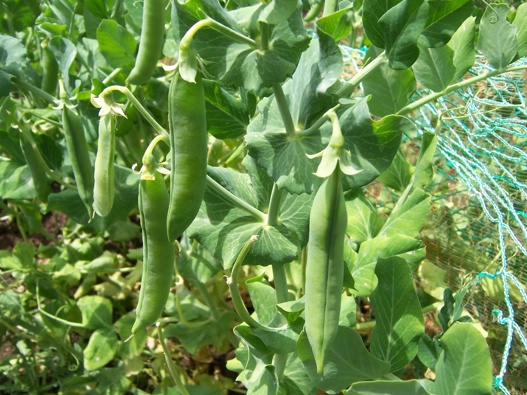Honestly! Most people think that winter is a “dead time” in the garden. But if you haven’t had a go at growing peas, you’d never know how easy that is.
First of all, gardeners often grow a “green crop” in winter that gets dug into the soil in spring to add Nitrogen for the next growing season; We often use peas and other legumes for that task and the key is to dig them in before they set seed.
Of course, those “green crops” are never sown for eating!
But if you want edible peas, for instance, you could plant the seeds right now in the garden amongst the wintery conditions and frosts, and they’d germinate as well… were it not for the hungry birds, who are keen to devour some sown pea seeds in those lean winter months as there are few nutritious sources of food available at that time of the year.
Oh and not just birds! Rats and Mice are in a similar boat… craving food.
I prefer to sow them in a hidden spot (glass house or tunnel house) in seed-pots and let them grow until they are 5, 6, or 7 cm tall, with true leaves (not just the cotyledons). At that stage most of the valuable nutrients will have been used from the pea seeds and the transplanted young plants will be relatively safe from the birds and rodents.
Seed raising mix in sowing cells works well for me; depending on the temperatures, you’d be looking at 2 weeks germination and an extra week or so to get some height on the little plants.
When ready for transplanting, create a nice garden bed with good, weed-free soil, some grains of slow-release fertilisers and carefully put them into their spot…
A bit of a “climbing rack” might keep them off the wet ground and results in harvesting cleaner pods.
Then it’s just a matter of letting them grow and set their own “seeds” in seed pods we call “peas”.
To be quite honest, few things taste fresher than new peas.
While our peas and beans are so cooperative in terms of germinating in winter, think about their relatives, the Broad beans. They too will come up in the coldest months of the year, some can germinate at 4 degrees.
Ideally plant the seeds from March (in the very coldest conditions) to May and Mid-June (elsewhere). These plants do not like too warm conditions.
Broad beans are quite heavy plants and prone to collapsing when they grow, so a bit of support would be appreciated.
The Sugar snap peas need a little bit of warmth to get going, so wait until late Early to Late Spring. But you know…. It’s something to look forward to!
Take your Radio, Podcasts and Music with you










